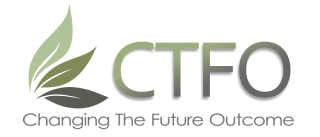Avoid "Serious" Health Issues!
HIGH FIBER DIET
What is Dietary Fiber?
All fiber comes from plants, bushes, vines or trees. Of course, the ones that we eat provide us with fruits, vegetables and grains. There are many different types of fiber but the three that are most important to the health of the body are:
Insoluble Fiber
This fiber does not dissolve in water, nor is it fermented by the bacteria residing in the colon. Rather, it retains water and in so doing, helps to promote a larger, bulkier and more regular bowel activity. This, in turn, may be important in preventing disorder such as diverticulosis and hemorrhoids, and in sweeping out certain toxins and cancer causing carcinogens. Sources of insoluble fiber are:
- whole grain wheat and other whole grains
- corn bran, including popcorn, unflavored and unsweetened
- nuts and seeds
- potatoes and the skins from most fruits from trees such as apples, bananas and avocados
- many green vegetables such as green beans, zucchini, celery and cauliflower
- some fruit plants such as tomatoes and kiwi
Soluble Fiber
These fibers are fermented or used by the colon bacteria as a food source or nourishment. When these good bacteria grow and thrive, many health benefits occur in both the colon and the body. Soluble fiber is present in some degree in most edible plant foods, but the ones with the most soluble fiber include:
- legumes such as peas and most beans, including soybeans
- oats, rye and barley
- many fruits such as berries, plums, apples bananas and pears
- certain vegetables such as broccoli and carrots
- most root vegetables
- psyllium husk supplement products
Prebiotic Soluble Fiber
These are relatively newly discovered soluble plant fibers. The technical name for this fiber is inulin or fructan. When these soluble fibers are fermented by the good colon bacteria, some further significant health benefits have been shown to occur by research in many medical centers. These soluble prebiotic fibers occur in significant amounts in:
- asparagus
- yams
- onions
- garlic
- bananas
- leeks
- agave
- chicory and other root vegetables such as Jerusalem artichokes
- wheat, rye and barley (smaller amounts)
Benefits of a High Fiber Diet
The health benefits of a high fiber diet, consumed on a regular basis and reaching recommended amounts (below), are now fairly well-defined. There are some additional benefits in the early research stage with the prebiotic soluble fibers. What is now known regarding a high fiber diet include:
Bowel Regularity
A high fiber diet promotes regularity with a softer, bulkier and regular stool pattern. This decreases the chance of hemorrhoids, diverticulosis and perhaps colon cancer.
Cholesterol and Reduced Triglycerides
The soluble fibers are the ones that will reduce cholesterol levels when used on a regular basis. Psyllium husk and prebiotic soluble fiber will also reduce cholesterol. They may also reduce the incidence of coronary heart disease. Oats, flax seeds and legumes or beans are the recommended fibers.
Colon Polyps and Cancer
It is still not certain if a high fiber diet helps prevent colon cancer. Considerable research suggests that this may occur. Certainly it makes sense to increase regularity and so speed the movement of cancer causing carcinogens through the bowel. In addition, reducing a heavy meat diet reduces the bile flow from the liver in a favorable way. This, too, reduces the amount of carcinogens that reach and are manufactured in the colon. Finally, a high fiber diet, including prebiotic soluble fiber, increases the integrity and health of the wall of the colon. The risk of cancer may be reduced.
Colon Wall Integrity
A high fiber diet changes the bacterial makeup of the colon toward a more favorable balance. For instance, it is known that those people with obesity, diabetes type 2 and inflammatory bowel disease have a predominance of bad bacteria in the colon. This, in turn, may render the bowel wall weak and allow bacteria and, indeed, even toxins to seep through. A high fiber diet with a modest reduction in animal and meat products may return the bacterial makeup to a more positive balance. This, in particular, has been seen when the soluble fiber prebiotics are added to the diet.
Blood Sugar
Soluble fiber such as in legumes (beans), oats and in prebiotic fibers slows the absorption of blood sugar and so helps regulate the sugar in the blood. Insoluble fiber on a regular basis is associated with reduced risk of type 2 diabetes.
Weight Loss
High fiber diets are more filling and give a sense of fullness sooner than an animal and meat based diet does. In addition, the soluble prebiotic fibers have been shown to turn off the hunger hormones produced in the wall of the gut and to increase the hormones that give a sense of fullness. Those hormones are made in the wall of the gut.
New medical research has shown that the bacterial makeup in the colon in overweight people is abnormal to the extent that they manufacture and absorb almost twice the number of calories through the colon wall as do normals. Prebiotic fibers (below) will help change this hormonal balancein a favorable way.
Bacteria and the Function of the Colon
The colon finishes the digestive process. Hopefully, the waste products move through in a nice regular manner. Insoluble fibers help this process by retaining water and so producing a bulkier, softer stool, which is easy to pass.
The additional role of the colon is to provide a home for an enormous number of micro-organisms, mostly bacteria. Recent research has shown that there are over 1,000 species of bacteria with a total bacterial count ten times the number of cells in the body. These bacteria play a major role in keeping the colon wall itself healthy. In addition, these good bacteria produce a very strong immune system for the body. They significantly increase calcium absorption and bone density. They provide other documented benefits. It is the soluble fibers in the diet that are so effective in stimulating the growth of good colon bacteria.
How Much is Enough?
The amount of fiber in food is measured in grams. National nutritional authorities recommend the following amounts of dietary fiber daily.
Under Age 50 Over Age 50
Men 38 grams 30 grams
Women 25 grams 21 grams
Under Age 50 Over Age 50
Men 38 grams 30 grams
Women 25 grams 21 grams
For a week or so, it is best to tally the amount of fiber you are consuming. Boxed and packaged foods will have the amount of fiber per serving on the nutrition label.
Which Fibers and Which Foods are Best?
As noted, healthy fiber is only found in plants. The three major categories are whole grains, fruits and vegetables.
Whole Grains
Wheat, oats, barley, wild or brown rice, amaranth, buckwheat, bulgur, corn, millet, quinoa, rye, sorghum, teff and triticals. By far, wheat, oats and wild or brown rice are most common. Always buy whole grain products. White bread, baked goods and rolls almost always are made from wheat flour. Wheat flour is white because most of the fiber, vitamins and other nutrients have been removed. Try not buy enriched grains. What this means is that simple white flour has had vitamins added to it by the manufacturer. The word, enriched, implies a good and healthy product. On the contrary, enriched means that most of the fiber has been removed and a few vitamins added.
Fruits
Fruits come from trees such as apple and pear or from bushes or vines. You should eat a wide variety of fruits, preferably with every meal. In many cases, the skin of a fruit such as apple will contain much of the insoluble fiber while the pulp contains most of the soluble fiber. To the extent possible, buy organic fruits as these will have little or no pesticides. Always wash fruit.
Vegetables
Eat a wide variety of vegetables. They should be a mainstay of lunch and dinners. Frozen vegetables retain as much nutrition and fiber as fresh vegetables. As with fruit, try to buy organic to reduce any residual pesticide ingestion. Wash fresh vegetables thoroughly.
Cruciferous vegetables such as broccoli, Brussels sprouts and cauliflower contain certain chemicals such as sulforaphane. This substance has very strong anti-cancer properties and should be eaten frequently.
Legumes, Beans, Peas and Soybeans
These vegetables have plenty of soluble fiber and should be part of a varied vegetable intake. Beans, in particular, contain a certain type of fiber that may lead to harmless gas or bloating.
Nuts and Seeds
These are rich sources of fiber and are a good substitute for sweets such as candies and baked sweet goods. While nuts and seeds are rich in fiber, they also contain vegetable fat and so can and do add calories.
Read the Labels
As noted, fresh and frozen foods are usually better. They have good nutrition and few, if any, chemicals added to them. When buying packaged foods and, in particular grains, look for three things:
- The first word on the label should be whole, such as whole wheat or whole grain.
- Check out the calories and the amount of fiber in a serving.
- How many and what other additives or chemicals are added. Fewer is always better. Do you know what each additive does? Some are added not for the benefit of the buyer but rather for manufacturers. These could and do include sugar, artificial flavor, chemicals to prevent oxidation and spoilage, emulsifiers to blend the product. You have to be a detective.
Fiber Facts, Nuggets and Pearls
- For breakfast you can easily get the day started well by using a high fiber, whole grain cereal. Check the labels. Add fruit such as blueberries and bananas. If you are an egg eater, use whole wheat or grain toast. Adding wheat germ gives you a good fiber kick.
- Always use whole grain or wheat with rolls and sandwiches. Does your fast food store not have them? Perhaps you look elsewhere. Eating an occasional black bean or veggie burger provides variety.
- Snacks should consist of fruit and/or nuts. While nuts are loaded with fiber, they are an energy rich food, meaning they have a lot of calories in a small packet.
- Fruit juices should contain pulp. Clear juices such as clear orange, pear or apple juice contain little fiber and have a lot of fructose. Prune juice is usually high in fiber.
- Homemade soups – adding fresh or frozen vegetables to a chicken or vegetable stock is a good way to start homemade soup.
- Salads – adding cooked and then chilled vegetables provide great flavoring to almost any salad. Remember, a cobb salad has lots of cooked corn in it. Small slices of apples or oranges and nuts such as chopped walnuts or sliced almonds always adds taste, variety and fiber to almost any salad.
- Fruit – Try to eat fruit of some type with almost every meal.
- Rethink how you place the various foods on your dinner plate. Reducing the portions of the meat or animal food portion to the side with equal or more portions of vegetables, legumes and fruits portion always allows for more fiber. There was never anything magic about making the meat or animal food portion the main part of the dinner plate. Eating from smaller plates can, over time, trick your mind and long term habit of using a dinner plate. Again, there is nothing magic in an 11, 12, or 13 inch dinner plate.
Footnote: We Love "Unprocessed Wheat Bran Mixed In Water 30 Minutes Before Every Meal!
www.totalfitnessexperts.com




Comments
Post a Comment